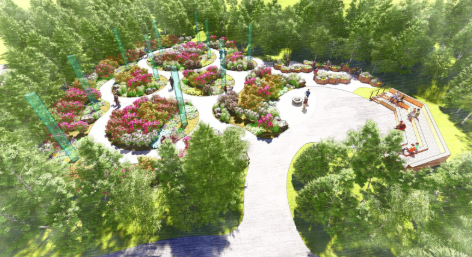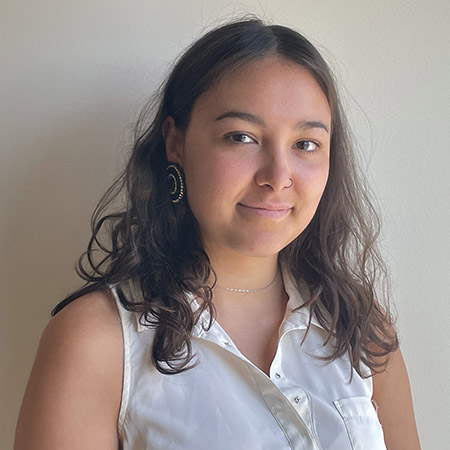
- Details
- By Neely Bardwell
As part of the work to commemorate the challenges Alaska Native peoples face presently and historically, the Mellon Foundation has awarded $3.5 million to the Alaska Native Heritage Center (ANHC) for their Healing Garden and Monuments project.
The Healing Garden Project, titled "Ngíisdla," derived from Xaad kil (Haida) meaning "to heal, recover, and get well again," is an addition to the October 2023 raising of a healing totem pole in honor of those impacted by Indian Boarding Schools and the children who passed while attending the schools. The project plans to add more monuments in addition to the totem pole bringing the total to ten monuments, each dedicated to a different issue the ANHC and community want to raise awareness.
On top of the funding from the Mellon Foundation, the project also received several thousand dollars from the Bureau of Indian Affairs.
Marilyn Balluta, Senior Manager for the Community Healing Garden & Monuments at the ANHC, said she hopes the space will give visitors a chance to learn and heal.
“This is a historic step towards healing for Alaska Native communities from all the historical trauma inflicted by colonialism. This is the time for people to come and have a space of their own where they can do their healing, and they can do their ceremony,” Balluta told Native News Online.
Two monuments set to join the Healing Garden are a Veterans Monument dedicated to the Alaska Natives who are or have served, and a Missing Murdered Women, Girls, and Two-Spirit monument. Both were advocated for by the local Alaska Native community.
The garden portion of the project will be built around the monuments featuring sacred and medicinal plants native to the Alaska area. Each monument will be created by Native artists, and the ANHC has hosted several community engagement meetings to discuss what the community wants to see reflected in the project.
Each of the community meetings are recorded and photographed in hopes that a short film will be created as part of an Oral History Project. The next community engagement meeting will take place May 23.
“We’re re-defining monuments. It's not going to be your regular steel and cement monuments. These monuments will represent all Alaska Native people from the five regions, and it's the community input that these monuments will be created by,” said Balluta. “These monuments will also come with the ceremony and the healing from the community who will decide how and when to do ceremonies.”
Currently, the ANHC is overseeing the development of the land and working directly with Alaska Native artists to solicit proposals on the development of the monuments.
More Stories Like This
Native News Weekly (August 25, 2024): D.C. BriefsUS Presidents in Their Own Words Concerning American Indians
Indigenous Actor Elaine Miles Reports Detention by Alleged ICE Agents
Happy Thanksgiving from Native News Online
Coming Up on Native Bidaské: Behind the Animation: Joey Clift Talks “Pow” and Native Storytelling
Help us tell the stories that could save Native languages and food traditions
At a critical moment for Indian Country, Native News Online is embarking on our most ambitious reporting project yet: "Cultivating Culture," a three-year investigation into two forces shaping Native community survival—food sovereignty and language revitalization.
The devastating impact of COVID-19 accelerated the loss of Native elders and with them, irreplaceable cultural knowledge. Yet across tribal communities, innovative leaders are fighting back, reclaiming traditional food systems and breathing new life into Native languages. These aren't just cultural preservation efforts—they're powerful pathways to community health, healing, and resilience.
Our dedicated reporting team will spend three years documenting these stories through on-the-ground reporting in 18 tribal communities, producing over 200 in-depth stories, 18 podcast episodes, and multimedia content that amplifies Indigenous voices. We'll show policymakers, funders, and allies how cultural restoration directly impacts physical and mental wellness while celebrating successful models of sovereignty and self-determination.
This isn't corporate media parachuting into Indian Country for a quick story. This is sustained, relationship-based journalism by Native reporters who understand these communities. It's "Warrior Journalism"—fearless reporting that serves the 5.5 million readers who depend on us for news that mainstream media often ignores.
We need your help right now. While we've secured partial funding, we're still $450,000 short of our three-year budget. Our immediate goal is $25,000 this month to keep this critical work moving forward—funding reporter salaries, travel to remote communities, photography, and the deep reporting these stories deserve.
Every dollar directly supports Indigenous journalists telling Indigenous stories. Whether it's $5 or $50, your contribution ensures these vital narratives of resilience, innovation, and hope don't disappear into silence.
 The stakes couldn't be higher. Native languages are being lost at an alarming rate. Food insecurity plagues many tribal communities. But solutions are emerging, and these stories need to be told.
The stakes couldn't be higher. Native languages are being lost at an alarming rate. Food insecurity plagues many tribal communities. But solutions are emerging, and these stories need to be told.
Support independent Native journalism. Fund the stories that matter.
Levi Rickert (Potawatomi), Editor & Publisher

